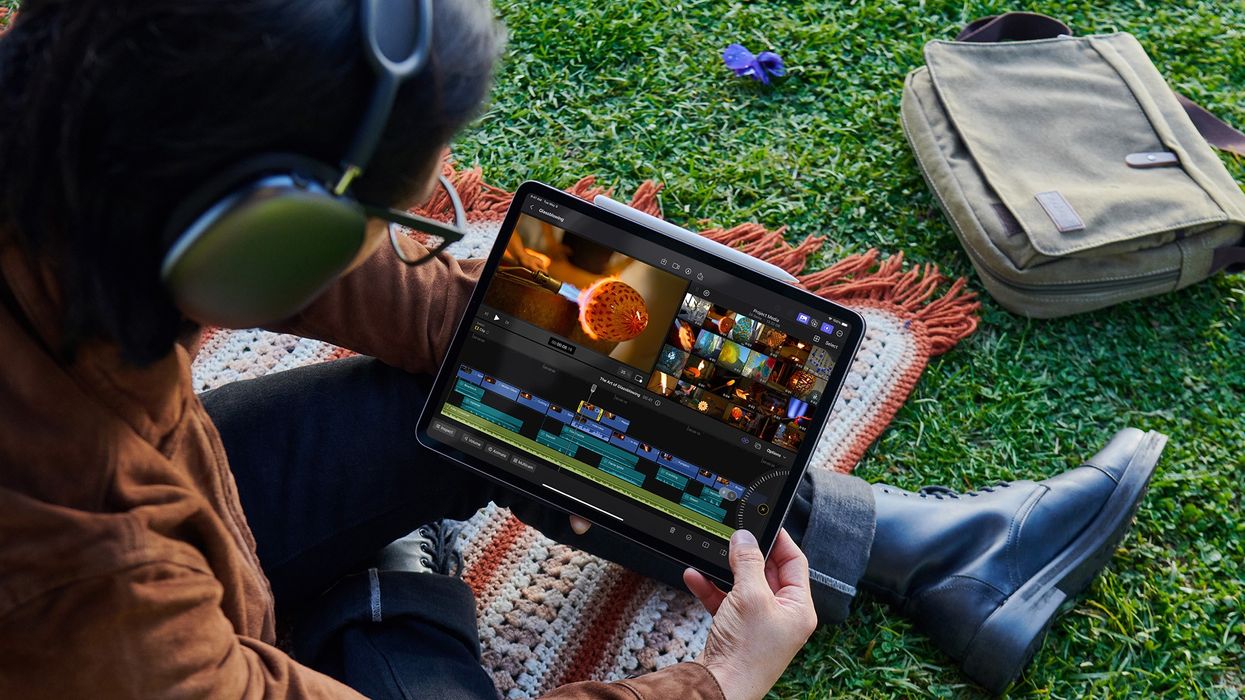FCPX For iPad Is Here—Should You Make The Switch to Mobile?
The battle of editing powerhouses begins. Which side will you choose?

In the world of professional video editing, Final Cut Pro X has long been hailed as a top contender, even though the suite has its detractors during the great transition from FCP 7 to X.
With the intuitive interface, advanced editing tools, and seamless integration with Apple's ecosystem, Final Cut Pro X is a staple for filmmakers, editors, and content creators alike.
However, with the official release of Final Cut Pro X for iPad, the editing landscape has been forever altered. Let’s delve into the clash between Final Cut Pro X for iPad and its desktop counterpart, analyzing their respective strengths and weaknesses and which platform reigns supreme.
Portability and Convenience
One of the key advantages of Final Cut Pro X for iPad is its portability and convenience. The iPad version allows you to edit on the go, freeing you from the confines of your desktop setup.
The lightweight and portable nature of the iPad, combined with its touch-based interface, makes editing a breeze. Whether you're in a coffee shop or on a film set, Final Cut Pro X for iPad enables you to work seamlessly, giving you the flexibility to edit wherever inspiration strikes or when you really need to deliver that cut.

Performance and Processing Power
While the iPad has come a long way in terms of processing power, it still falls short of the raw horsepower found in desktop computers. Final Cut Pro X for desktop harnesses the full potential of modern processors and graphics cards, enabling smoother real-time playback, faster rendering times, and better overall performance. This advantage becomes particularly apparent when working with high-resolution footage or complex visual effects.
For now, you’re never going to get the power of a desktop on an iPad.
Having said that, Final Cut Pro X for iPad does leverage the power of the new Apple Silicon SoCs (system on a chip). The machine learning capabilities also offer impressive performance within the confines of a tablet. While it may not match the sheer processing power of its desktop counterpart, it is more than capable of handling most editing tasks efficiently.
With regular software updates, Apple continues to push the boundaries of what the iPad can achieve, ensuring that Final Cut Pro X for iPad remains a viable option for editing professionals.

User Interface and Control
This is a big one. Editing on the iPad vs. the desktop is like playing two different sports.
The touch-based interface of Final Cut Pro X for iPad provides an intuitive editing experience. Pinch-to-zoom gestures, swipes, and taps allow for quick editing maneuvers. The ability to physically interact with the timeline and other editing elements adds a level of tactile engagement that some editors find appealing.
Moreover, the iPad's Apple Pencil compatibility enhances precision and control, making it an excellent choice for fine-tuning edits, creating intricate graphics, or performing color grading adjustments.

Final Cut Pro X offers a more traditional editing experience on the desktop front. The precision of a mouse or trackpad, combined with the vast array of keyboard shortcuts, allows for faster navigation and editing workflows. The desktop interface also provides a more extensive set of tools and features, making it ideal for advanced editing techniques and professional workflows.
Which One Should You Choose?
When it comes to choosing between Final Cut Pro X for iPad and Final Cut Pro X for desktop, why not choose both? If you don’t mind paying the subscription fee, that is.
Ultimately, it boils down to personal preferences and project requirements. The iPad version excels in portability and convenience, offering a flexible editing solution for creators on the move. The desktop version delivers unmatched processing power, a comprehensive feature set, and a refined editing experience for those tackling complex projects.

Final Cut Pro X for iPad is now available via the Apple App Store.
Is this something you want in your editing workflow? Let us know in the comments!











